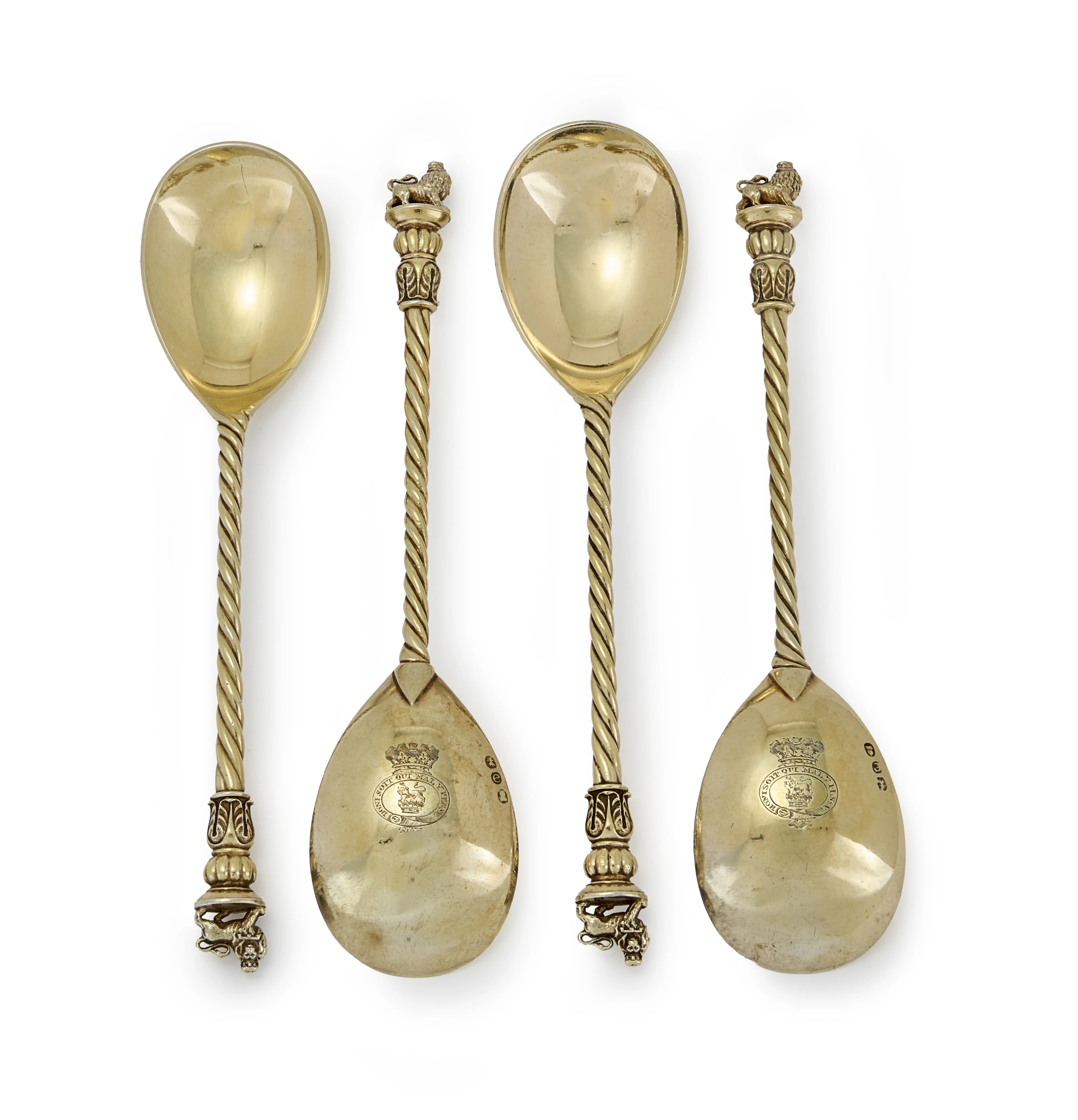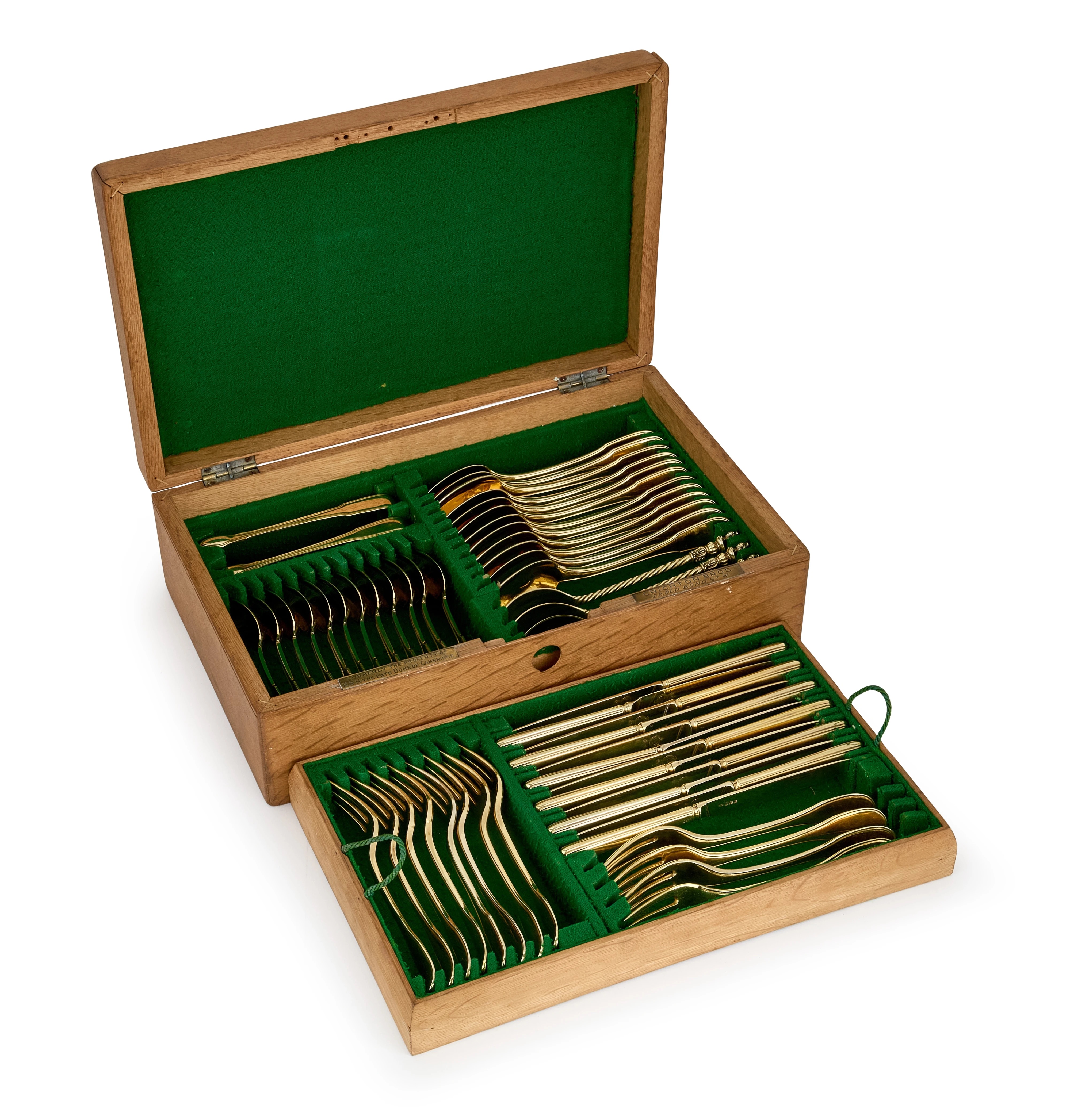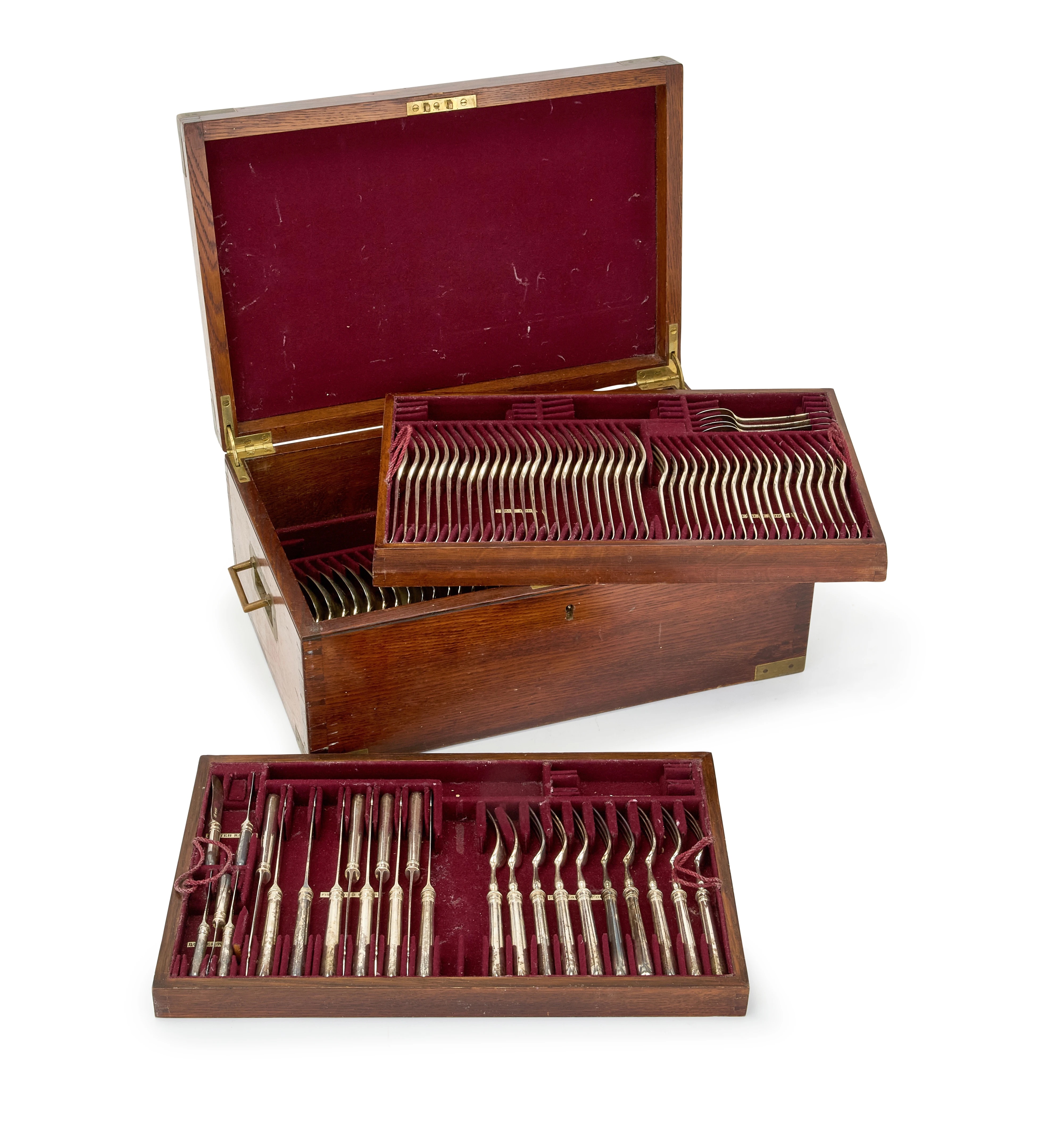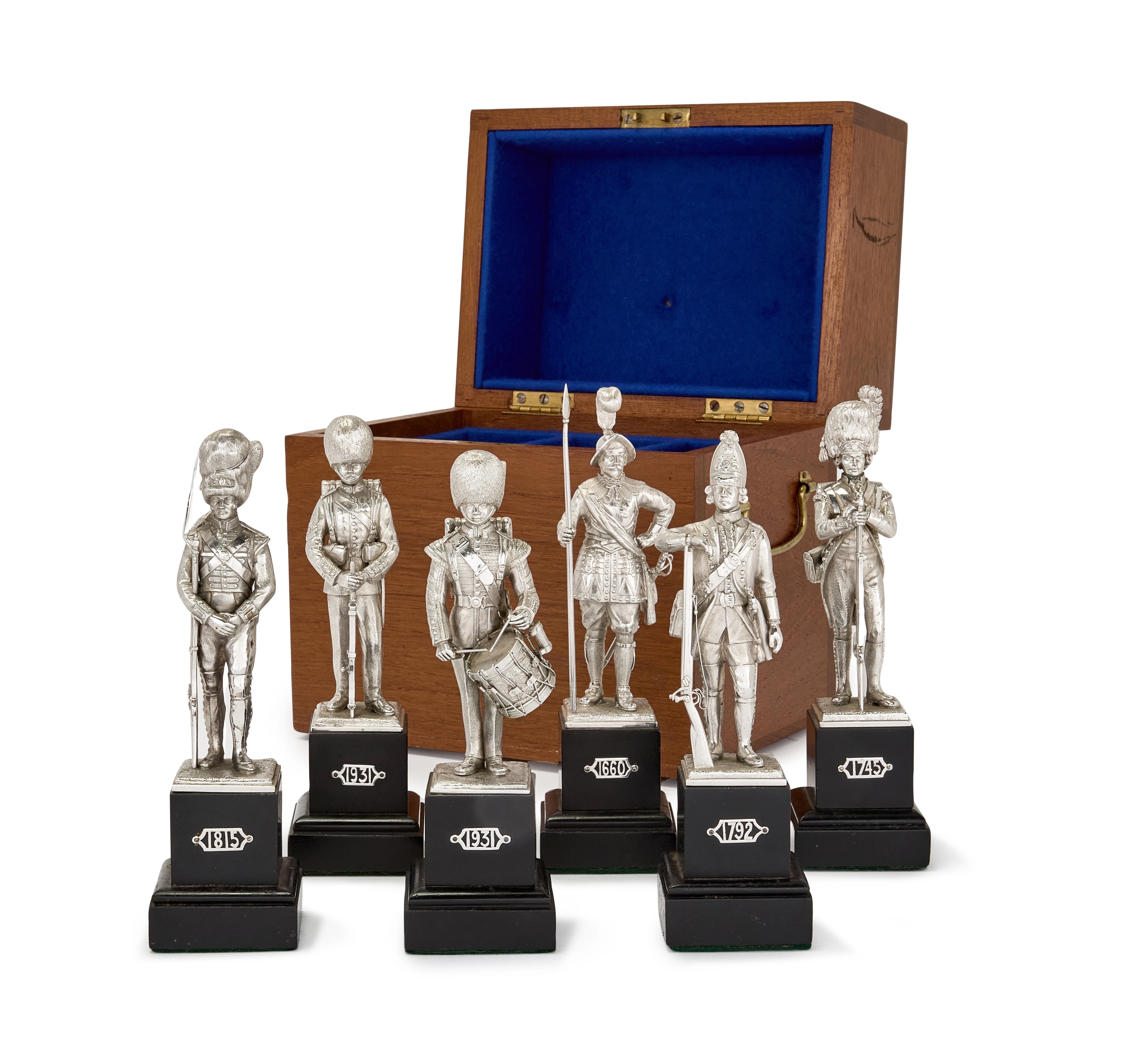A silver-gilt dessert canteen believed to have belonged to Prince George, the second Duke of Cambridge (1819–1904), sold for £6,035 at Roseberys’ Silver Auction on June 24. Falling within its £5,000–£8,000 estimate, the canteen was secured by a British buyer in the room after competitive bidding.
Lot 6: Of royal interest. An assembled canteen of George III and IV silver gilt dessert flatware. 1799-1820.
Price Realised: £6,035
Closely tied to the British royal family across generations, the canteen is associated with Prince George, grandson of King George III and Queen Charlotte, of Bridgerton fame, and first cousin to Queen Victoria. George was born just three months before Victoria and would have been heir to the throne had she not been born. Though his father, Prince Adolphus, Duke of Cambridge, was younger than Victoria’s father, this made George ineligible under the rules of succession. The title ‘Duke of Cambridge’ remained dormant after his death until revived in 2011 for Prince William, his first cousin six times removed.

George, the second Duke of Cambridge
The assembled flatware comprised dessert spoons, knives, forks, teaspoons and sugar tongs, with pieces bearing the cyphers of Queen Charlotte and Princess Mary, George’s grandmother and aunt. Much of Mary’s royal silver passed to George upon her death in 1857, as he acted as her residuary legatee.

“This canteen is more than a collection of fine silver; it’s a tangible thread connecting Queen Charlotte to Prince William today,” said Georgina Agnew, Head of Silver at Roseberys. “We were thrilled to present such a historic and evocative collection of flatware.”

Prince George’s long military career included nearly 40 years as Commander-in-Chief of the British Army. His tenure was marked by resistance to reform, contributing to the Army’s poor performance in the early stages of the Second Boer War. His personal life drew attention when he married actress Sarah Fairbrother without royal consent, in violation of the Royal Marriages Act. Their children, surnamed FitzGeorge, were excluded from royal status and inheritance. Upon his death, George’s belongings were sold through a major 1904 Christie’s auction, dispersing items once expected to return to the Crown into private hands.
Lot 58: A part canteen of George VI silver flatware. Tessiers (Vander & Hedges), London, 1938.
Price Realised: £5,117
The sale also featured a private UK collection with silverware dating from the 18th to the 20th century, which achieved a 100% sell-through rate. The highlight of the collection was a canteen of George VI silver flatware made by Tessiers (Vander & Hedges), which achieved a price of £5,117. Tessiers was likely established in 1812, possibly by descendants of Etienne de Tessier, a Huguenot refugee who arrived in England in 1712. The business, which specialised in silver and goldsmithing, as well as jewellery production, was sold in 1875 to John Gotlieu Vander and John Hedges who continued the activity under the name of E. Tessier and/or Vander & Hedges.
Finally, a set of six regimental silver models by London silversmiths Carrington & Co. flew over their estimate of £1,000 - £1,500 to realise a price of £7,216. The group of figures depict various guardsmen and drummers from historic regiments, including a figure modelled as a guardsman during the Jacobite uprising (1745), a 19th century guardsman (1815) and a 20th century example in a bearskin hat. The engraving on the plaque affixed to the base of the drummer indicates that this piece was gifted to Captain Christopher John Darell Jeffreys, who married Lady Rosemary Jeffreys (nee Agar), daughter of the 4th Earl Normanton, in 1931. Tragically, Capt. Jeffreys was killed in action near Furnes, Belgium, just nine years later, aged thirty two.
Lot 7: Of military interest. A boxed set of six regimental silver models of guardsmen and a drummer. Carrington & Co., London, 1929-1930.
Price Realised: £7,216
Carrington & Co. had successive Royal Warrants granted to them by Queen Victoria, Prince Albert, Edward VII, and George V, as well as Russian royalty. Their brooches, cufflinks, and lockets were favorites of European royals, who tasked Carrington with designing some of their most impressive jewels.







